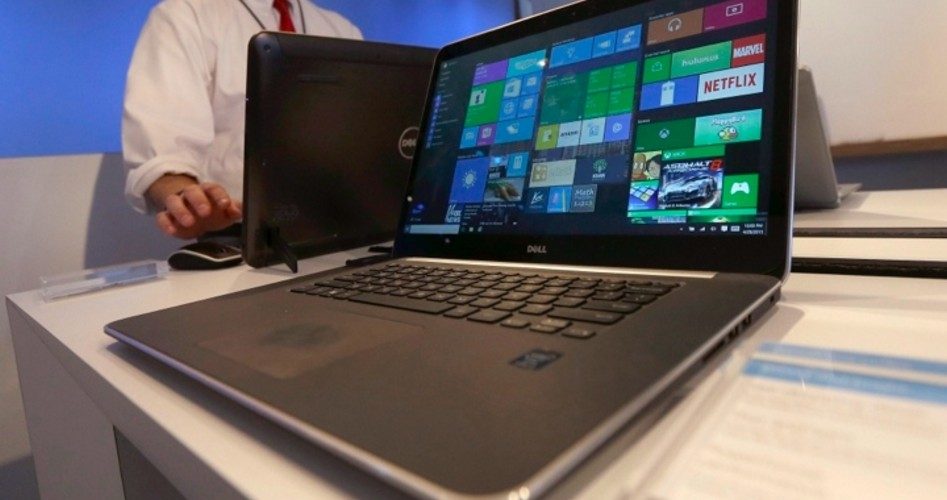
Over the past few months, Microsoft has maintained a course that continues to anger and alienate users. Having converted the Windows operating system into a suite of spyware tools designed to harvest users’ data through recommended updates that it has forced on users, the Redmond giant has given many of those users reason to abandon Windows for another operating system. As Windows continues to lose users, Microsoft — rather than adjust course —has instead ramped up the very tactics that angered users in the first place.
Last summer, Microsoft announced that anyone currently running Windows 7, 8, or 8.1 would be able to upgrade to the new and “improved” Windows 10 for free. Many wondered why the company would give away licenses to use the new operating system, especially considering that in the past users have paid good money to purchase new iterations of Windows. Within days of the release of Windows 10, the reason was clear: greater data-mining opportunities. The entire operating system is designed to harvest users’ data for Microsoft’s financial gain.
Despite optimistic predictions from Microsoft of one billion Windows 10 devices within three years, adoption slowed after the spyware nature of the operating system became known. In fact, there are currently still almost as many people using Windows XP as are using Windows 10. This is particularly astounding considering that Windows XP reached end-of-life — and stopped receiving security updates — more than two years ago. And even after months of Microsoft pushing its free offer, Windows 7 still has almost three times as many users as Windows 10. It appears that given the choice, many would rather have an older (in the case of Windows 7) or even increasingly unsafe (in the case of Windows XP) operating system than to accept a free upgrade to the newest version of Windows if it means giving Microsoft free run of their data.
Other users decided to jettison Windows altogether and switch to either Mac or Linux. The data indicate that most of them are switching to Linux, which is free to download and offers greater privacy and freedom to users.
Rather than miss their one-billion-user goal, Microsoft began a long and weary game of forcing the Windows 10 upgrade on users via downloads in the form of security updates. Over a period of several months, Microsoft forced one user after another to upgrade by downloading all the necessary files to their computers and scheduling the upgrade to happen automatically when the computer was rebooted. As this writer reported then:
As more and more people have become aware of the spyware nature of Windows 10, many have decided not to take Microsoft up on their “free upgrade.” People all over the world decided to either switch to some other operating system (such as Linux) or just stay with Windows 7, 8, or 8.1. Now Microsoft admits that it is forcing the update to those who are using those previous versions of Windows, even if they have declined the “upgrade.”
After users learned of this, many of them changed their settings to not allow the Windows 10 download masquerading as a security update. To get around those users’ choice, Microsoft changed the update from an optional update to a recommended update. More and more users were forced to accept the downloads.
Then the pop-ups began. In December, 2015, Windows 7, 8, and 8.1 users began getting notifications that all files were downloaded and it was time to approve the update to Windows 10. This notification — known as the Get Windows 10 (or GWX) pop-up — initially offered the update and gave users the choice to accept, decline, or postpone the upgrade. Even after declining the update, users continued to get the GWX pop-up at increasing intervals. Then, Microsoft changed the wording of the GWX pop-up to remove the option to decline the upgrade. The only two options were to accept or reschedule. Many — too many for Microsoft’s comfort — simply clicked the red x in the top right-hand corner and went back to what they were doing.
As if Microsoft had not already crossed the line, it has recently changed the way users accept the upgrade. The new method of saying yes? Click the x. That’s right. The method Microsoft trained users to use to reject the update for the past six months is now the method to accept it. And it is working. After a lag in Windows 10 adoption, it is finally picking up again, not because people are choosing Windows 10, but because Microsoft is tricking them into accepting it.
As Brad Chacos wrote for PCWorld, his wife was forced an upgrade by this method. Her response? Time to shop for a Mac. As he expressed the frustration felt by many including his wife, he wrote:
By forcing out Windows 10 as a Recommended update and changing the behavior associated with exiting the GWX pop-up, Microsoft’s actively striving to push the operating system on people who actively don’t want it.
That is not the only dirty trick Microsoft has played to increase its Windows 10 numbers, either. In March, the company rolled out a “security update” to fix a problem it had created with another update. The problem was that Bitlocker — the built-in encryption software for Windows — was crashing on machines running Windows 7 and Windows Server 2008 R2. The update (KB3133977) began causing a Secure Boot error on any system that includes an ASUS-based motherboard. Asus has been around for nearly three decades and provides motherboards for some of the biggest names in computer manufacturing. That is a lot of computers. The good news is that KB3133977 was an optional update instead of a recommended update. Because of this, it would not be a problem for many users. Then in May, Microsoft — though aware of the problem — inexplicably upgraded the update from optional to recommended, guaranteeing it would affect a much larger number of computers. Computer users all over the world began reporting that their computers would not boot after the update.
After Microsoft caused the complete failure of so many systems (along with the possible loss of data), what was the company’s response? Did it fix the problem? No. Instead, Microsoft simply recommended that those users upgrade to Windows 10, since KB3133977 does not cause any problems with that operating system. The Microsoft page for this “known issue” says:
The Secure Boot feature is supported in Windows 10. To learn more about the security advantages of this feature and about the upgrade path from Windows 7 to Windows 10, go to the following Windows website:
www.microsoft.com/windows
Let that sink in. Microsoft was aware that KB3133977 would cause the failure of any computer with an Asus motherboard before making it a recommended update. Accepting recommended updates is the default setting for Windows. Once all those users were tricked into accepting the update and it crashed their systems, Microsoft said — in essence — “Hey! You know what? You should consider upgrading to Windows 10 now that you have to reinstall everything anyway.” It’s transparently self-serving for a company to create a problem so that it can propose a “solution” that the user has repeatedly rejected.
This writer would not be surprised to see Microsoft wind up in court over some of these tactics.
The end result of all these (and other) shenanigans is that though 270 million users have switched (or have been force-switched) to Windows 10, Microsoft is steadily losing users to both Mac and Linux. Data from NetMarketShare indicate that Microsoft has lost more than 14 million users in a growing market since the release of Windows 10 while both Mac and Linux have gained market share. It appears that Microsoft misjudged how willing users would be to give up their privacy.
Photo of computer displaying Windows 10: AP Images
In the interest of full disclosure, the writer of this article has been a Linux user for several years and does not use any Microsoft products or services. This article was written on his System76 Bonobo Extreme running Ubuntu 16.04 using LibreOffice 5.1.2.2.



